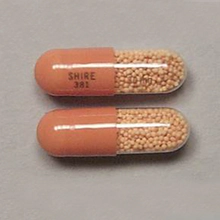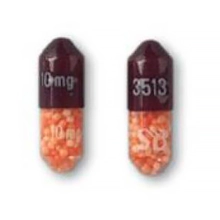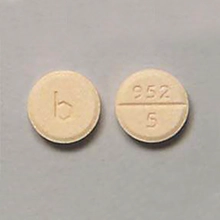DRUGS: WHAT YOU
NEED TO KNOW Booklet

Signs and Symptoms of Amphetamine Addiction

Every year, more than five million Americans decide to abuse a prescription stimulant, particularly ones that contain a form of amphetamine.1 One reason this abuse is so high must have something to do with the frequency with which this type of drug is prescribed. Doctors across the country prescribe amphetamines for weight loss, treatment of narcolepsy and the controversial treatment of difficulty focusing and staying on task, especially for youth in school.
Of these five million stimulant abusers, three-quarters of a million are dependent on or addicted to these drugs. More than half a million people aged 26 or older were in this group.
Types of Prescription Amphetamines

Courtesy of portal.ct.gov

Courtesy of getsmartaboutdrugs.gov

Courtesy of portal.ct.gov
There are several drugs in this category. They are all strong central nervous system stimulants. Here are some of the brand names, followed by the generic name of the drugs they contain.
- Dexedrine (dextroamphetamine)
- Dextrostat (dextroamphetamine)
- Desoxyn (methamphetamine hydrochloride)
- Adderall (dextroamphetamine and amphetamine)
- Vyvanse (lisdexamfetamine)
- Mydayis (mixed amphetamine salts)
As strong prescription stimulants, all these drugs have a high potential for abuse and are addictive. Their distribution is closely controlled under federal law. Misuse of these drugs is a widespread health problem in America, particularly on college campuses.2 Adults may misuse these drugs to be able to keep up with pressures at work, cope with loneliness or other problems, or be able to go out and party after a full day at work.
Physical Signs of Amphetamine Addiction
Most drugs, prescription or otherwise, are taken for their euphoric effects and it’s the same with stimulants.3 A person abusing amphetamine generally feels more energetic and excited. They may be able to party all night after abusing stimulants or stay up all night and prepare for a final exam.
Stimulants also accelerate the processes of the body, reducing one’s appetite and making it harder to sleep. The effects are similar to those of cocaine, but they kick in more slowly and last longer. Here are some of the most common effects of these stimulants:

- Higher body temperature
- Increased blood pressure
- Faster heart rate
- Insomnia
- Exhaustion from an inhibited ability to rest
There is a very long list of undesirable effects associated with the abuse of amphetamines. They include:
- Difficulty breathing
- Numbness
- Feeling cold
- Loss of coordination
- Nausea
- Vomiting
- Diarrhea
- Headache
- Dizziness
- Tremors
If a person chronically abuses these drugs, as they will do once they become addicted to them, these symptoms may be seen:
- Paranoia
- Hallucinations
- Violence
- Irrational behavior
- Psychosis resembling schizophrenia4
As a person continues to abuse these drugs, they develop a tolerance for them. That means that the body becomes accustomed to it and the person will need to take a higher dosage to get the same effect they were looking for. These higher dosages can be disastrously bad for the body, with the individual developing symptoms like these:
- Dangerously high body temperature
- Irregular heartbeat
- Heart failure
- Seizures
The body can run such a high fever that organ breakdown results, resulting in the person’s death.
When a person takes these drugs as prescribed, they will swallow the pills with water or a meal. When the individual is addicted to them, they are more likely to be crushing the pills and snorting the powder or dissolving the pill and injecting the liquid.2 This misuse greatly increases the risks associated with these drugs.
Behavioral and Emotional Signs of Amphetamine Addiction

It’s not just street drugs that can cause dangerous changes to a person’s personality. The misuse of prescription amphetamines is just as dangerous. The following signs may be manifested by a person who is addicted to one of these prescription forms of amphetamine:
- Behavior problems
- Aggression
- Hostility
- Paranoia
In addition, when a person is addicted to any drug, they routinely go through personality changes simply because of the harm they are doing to themselves and their loved ones. The secrets they are keeping will tend to cause them to isolate themselves, avoid family events and get into arguments with anyone who tries to help them. They are on a dwindling spiral and need help fast.
The Long-Term Physical Damage of Amphetamine Addiction
Because amphetamines suppress the appetite, a person addicted to prescription amphetamines may lose too much weight. They may become exhausted because of their inability to sleep normally. Chronically elevated blood pressure can cause an irregular heart rate and heart failure.
Because they don’t eat normally, they may develop illnesses related to nutritional deficiencies. Those deficiencies can further contribute to emotional and mental problems.
Amphetamine Overdose
A prescription amphetamine overdose is truly a dangerous and life-threatening event. For this reason, anyone misusing or addicted to amphetamines should be helped to find a drug rehabilitation program at the first moment possible.
Here’s what may be seen during a prescription amphetamine overdose.
- Over-reactive reflexes
- Confusion
- Aggression
- Hallucinations
- Panic attacks
- High fever
- Heart attack
- Muscle pain
- Coma
- Convulsions
Withdrawal from Prescription Amphetamines
When a person tries to withdraw from these drugs, they are very likely to experience sharp cravings for more of the drugs. For this reason, it’s a very good idea to have excellent medical support during withdrawal.
Withdrawal symptoms associated with the cessation of prescription stimulant use include fatigue, depression, mood swings, hallucinations and poor sleep patterns.5
Getting Help for a Person Addicted to Prescription Amphetamines
Recovery from prescription amphetamine addiction is possible. It takes a person time to not only heal their body but also to build new sober living habits. For that reason, a longer drug rehab program is preferable to a shorter one of just a month or so.
The support of their family and friends is essential during this time. Many people benefit from being associated with others who have recovered from drug or alcohol addiction.
If you care about a person addicted to prescription amphetamine or any drug, help them find an effective drug rehabilitation program. If they refuse your help at first, a professional interventionist can be the turning point in getting them into rehab.
Sources:
-
SAMHSA. “Key Substance Use and Mental Health Indicators in the United States: Results from the 2020 National Survey on Drug Use and Health.” Substance Abuse and Mental Health, 2021. SAMHSA Publication ↩︎
-
National Institutes of Health. “Prescription Stimulant Medication Misuse.” NIH, 2016. NIH Article ↩︎ ↩︎
-
MedlinePlus. “Substance use - amphetamines.” MedlinePlus, 2020. MedlinePlus Article ↩︎
-
DEA. “Amphetamines.” DEA, 2020. DEA Publication ↩︎
-
NIDA. “Prescription Drug Abuse.” NIDA, 2015. NIDA Publication ↩︎


